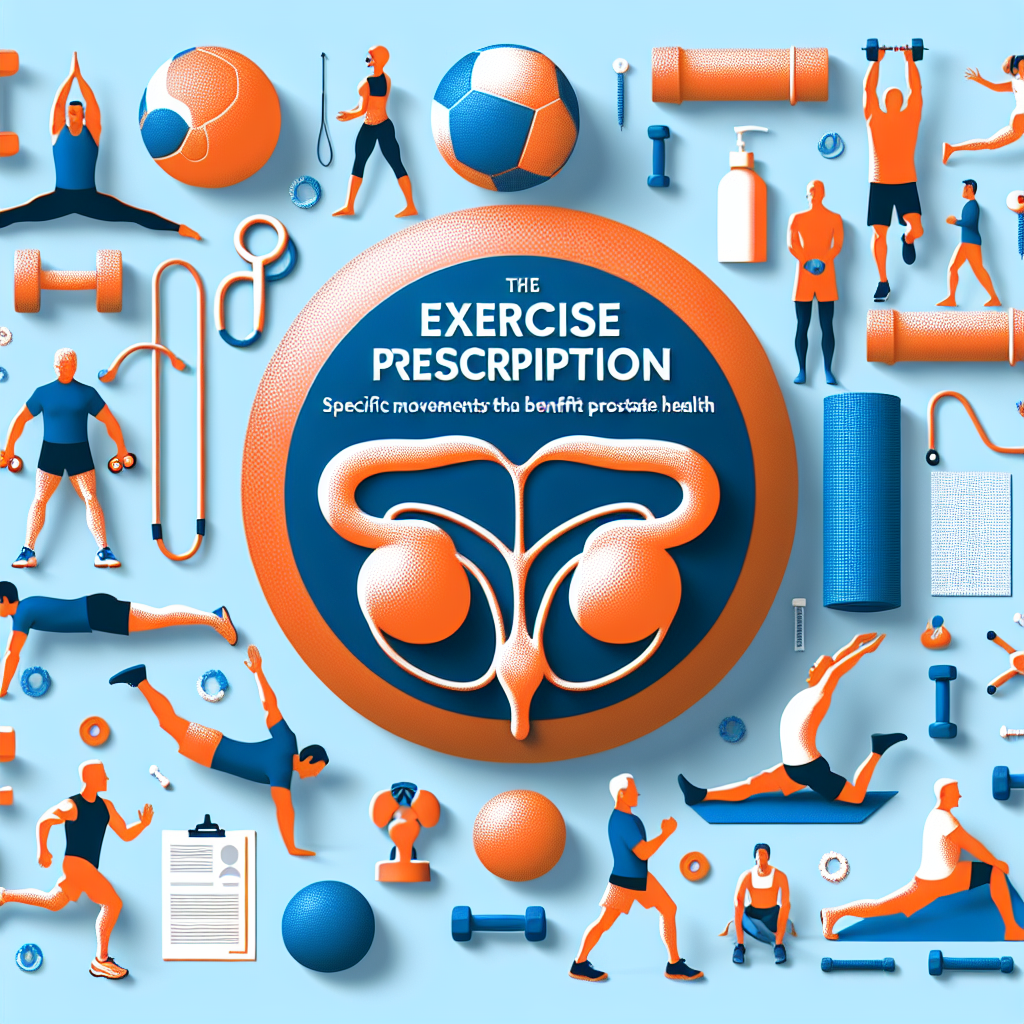The Exercise Prescription for Prostate Health
Exercise is often described as nature’s miracle drug, and when it comes to men’s health, that couldn’t be more accurate. Scientific research shows that physical activity plays a critical role in reducing prostate inflammation, regulating key hormones like testosterone, and supporting immune function.
These benefits go beyond general wellness. Targeted movement can help protect against serious conditions such as benign prostatic hyperplasia (BPH), chronic prostatitis, and even reduce the risk of prostate cancer.
This guide breaks down the relationship between physical activity and prostate health in aging men. It also offers a practical, easy-to-follow fitness plan you can start incorporating today.
Why Men Should Prioritize Prostate Health
The prostate is a small, walnut-sized gland located under the bladder. It produces the fluid that nourishes and transports sperm—making it essential for male reproductive health.
As men age, the prostate tends to enlarge or become inflamed, leading to symptoms like weak urine flow, frequent nighttime urination, and discomfort during urination. More importantly, prostate cancer remains the second most common cancer in men globally, with over 1.4 million new cases diagnosed every year (World Health Organization, 2022).
While age and genetics can’t be changed, you can reduce your risk by adopting a healthier lifestyle. Regular, focused physical activity is proven to support prostate function and reduce disease risk.
Dr. Stephen Freedland, a urologist at Cedars-Sinai Medical Center, explains: “Physical activity may not only reduce the risk of developing prostate cancer but also slow down the growth of existing cancer.”
How Exercise Supports a Healthy Prostate
A growing body of research confirms the strong connection between physical activity and prostate health. In a Harvard Health study, men who performed vigorous exercise for at least three hours per week had a 61% lower risk of dying from prostate cancer.
Physical activity impacts the body in several powerful ways:
– Reduces systemic inflammation.
– Helps manage a healthy weight—obesity is linked to more aggressive prostate cancers.
– Regulates hormone levels like testosterone and insulin, which influence prostate growth.
– Increases blood flow in the pelvic region, supporting tissue repair and healthy functioning.
In other words, using exercise as a tool for prostate recovery and inflammation control is not just a good idea—it’s essential for long-term wellness.
Designing a Prostate-Friendly Workout Plan
Think of targeted exercise as a prescription—just like medicine—for maintaining a strong and healthy prostate. Here’s how to build a fitness routine specifically designed for men’s prostate health.
Aerobic Exercise: Strengthening the Heart and Prostate
Cardiovascular activities help regulate weight, boost circulation, and lower inflammation markers such as C-reactive protein (CRP).
Multiple studies have shown that aerobic activities like walking, swimming, or cycling reduce the risk of both BPH and early-stage prostate cancer.
Suggested Plan:
– Aim for at least 150 minutes per week of moderate-intensity aerobic activity.
Example Activities:
– Brisk walking for 30 minutes five days a week
– Swimming for 30 to 40 minutes per session
– Stationary biking for 45 minutes
According to the American Cancer Society, men who exercise consistently reduce their risk of dying from prostate cancer by about 20%.
Resistance Training: Build Strength and Balance Hormones
Strength training, also known as resistance training, is another essential pillar of prostate-focused movement. It helps maintain lean muscle, regulate metabolism, and balance hormone levels like testosterone—all of which play a role in prostate health.
Suggested Plan:
– Perform resistance training two to three times per week.
Recommended Movements:
– Squats and lunges (support the pelvic area)
– Push-ups (improve core and upper body strength)
– Deadlifts (aid posture and core health)
– Resistance band rows (strengthen the back and arms)
Always use proper form to avoid injury. If you’re new to strength training, consider working with a certified trainer or explore guided video tutorials available at edrugstore.com’s Health & Wellness section.
Pelvic Floor Training: Supporting Function from the Inside
Pelvic floor exercises, often called Kegels, target the muscles responsible for bladder control and support the prostate indirectly. These exercises are particularly valuable for addressing urinary symptoms and aiding recovery after prostate surgery.
Suggested Plan:
– Perform Kegels 2 to 3 times per day.
How-To:
– Contract the muscles you would use to stop the flow of urine.
– Hold the contraction for 5 seconds, then release.
– Repeat 10 to 15 times per set.
Tip from the Experts:
“One of the best things men can do after prostate surgery is begin pelvic floor training early,” recommends Dr. Heather Jeffcoat, a physical therapist specializing in male pelvic pain.
If needed, consult a pelvic floor specialist or check for expert-approved video instructions to ensure you are doing the exercises correctly.
Stretching and Mobility: Restore Circulation and Ease Tension
Stretching helps release physical tension in areas near the prostate, including the hips, groin, and lower back. Doing so supports better pelvic health and can improve comfort, especially for men who sit for long periods.
Suggested Plan:
– Stretch for 10 to 15 minutes daily or after workouts.
Beneficial Movements:
– Hip bridges
– Cat-cow stretches
– Pigeon pose
– Deep squats
– Butterfly stretches
Yoga props, foam rollers, and online tutorials can make these movements easier and more effective. Explore video walkthroughs on wellness websites like edrugstore.com for additional guidance tailored to men’s flexibility.
Additional Lifestyle Habits That Boost Exercise Results
Combining fitness with healthy habits enhances your overall wellness and further supports your prostate.
Key Tips:
– Stay hydrated to support proper urinary function.
– Eat prostate-friendly foods like tomatoes, broccoli, flaxseeds, and green tea.
– Reduce intake of red meat and processed foods, as they may contribute to inflammation.
– Take regular walking or standing breaks to reduce pelvic pressure, especially if you work at a desk.
Interesting Fact:
Men who follow a plant-based diet are 35% less likely to develop advanced prostate cancer, according to data from the American Institute for Cancer Research (2021).
Final Takeaway: Exercise Is Essential for Lifelong Prostate Health
Incorporating regular movement into your day can significantly improve your prostate’s health. Whether you aim to prevent prostate conditions, reduce symptoms of an enlarged prostate, or recover from a medical procedure, exercise is a key tool in your wellness plan.
Before starting any new routine, consult with a healthcare provider or men’s health specialist. This ensures that your exercise plan is safe and suited to your individual needs.
As Dr. Stacy Loeb from NYU puts it, “Prostate health isn’t about waiting until you have a problem. It’s about keeping the engine tuned before trouble starts.”
Begin today with purpose, take charge of your health, and help your future self thrive.
Need expert resources or personalized guidance? Browse tailored articles and telehealth support at edrugstore.com.
Sources
– World Health Organization. (2022). Prostate Cancer Statistics
– Harvard Health Publishing. (2020). Prostate Cancer: Exercise Can Lower Risk
– American Cancer Society. (2023). Physical Activity and Cancer Risk
– American Institute for Cancer Research. (2021). Diet and Prostate Cancer
– Freedland, S. (2021). Exercise and Prostate Cancer Prevention
– Jeffcoat, H. (2022). Pelvic Floor Therapy for Men
– Loeb, S. (2020). NYU Urology and Men’s Health Research
Discover tools, tips, and more to support your prostate health at edrugstore.com. Let movement be your best medicine.


